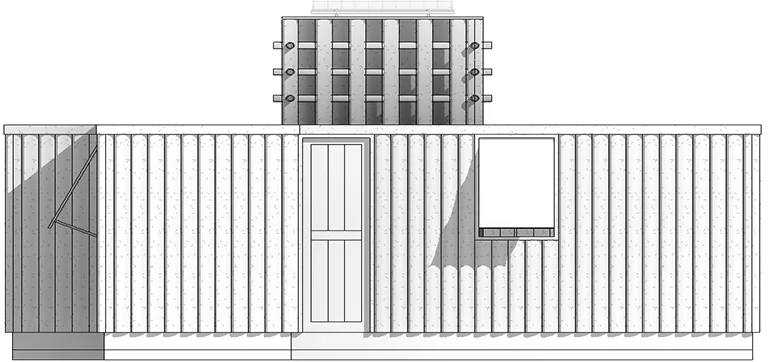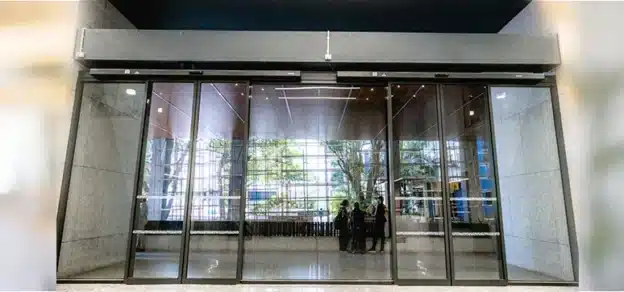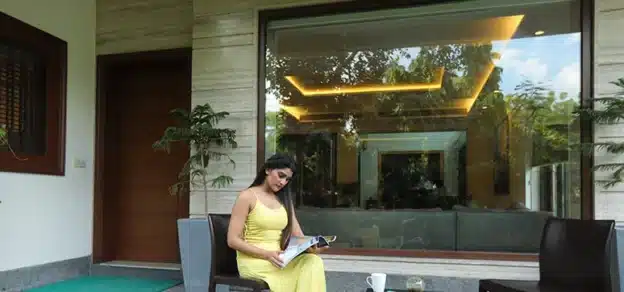The competition was designed to challenge and seek the creation of a temporary dwelling with ideas and concepts in architectural design, landscape design, and site planning. The aim of this competition was to promote our ideas of exploring the possibilities for living in harsh environments, as well as simultaneously raising awareness of environmental sustainability.
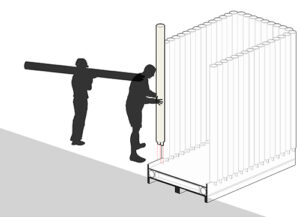
This year’s competition focuses on the Desert House, an extraordinary architectural type with creative design methods to adjust the demands of a house in a specific site environment. Entrants were challenged to conceive a new and original concept for a temporary house in the desert.
The competition seeks the creation of a temporary dwelling for a group of 4-6 people to live comfortably with ideas and concepts in architectural design with site planning. Provided the site is located in a desert and belongs to a community with similar houses, possible solutions about plumbing and electricity should be figured out.
Your designed desert house has to feature the most basic components for people to live around 90 days.
Concept Philosophy
Self-sustainable, environmental, and practical; these characteristics are the basis of our entry. We took a step back and studied the limitations of living in a desert, and we asked ourselves, how do we bring civilised ways of living to a harsh, isolated space… temporarily?
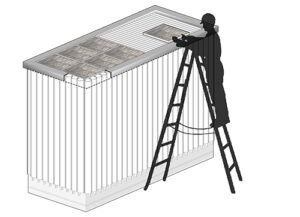
Due to temporary use, the use of wooden and local building materials made most sense due to their mixed-use properties. The building process starts with a timber wood grid as a base for elevation, covered with a layer of the plywood panel, and light Date Palm Particle Tubes (DPPT) made out of the trunk and rachis of the date palm tree, stabilised using heavy sandbags. For our floor, we have added a plywood panel, and attached are plywood pegs to keep hold of the Date Palm Particle Tubes (DPPT). To top it off, we have used the tightly woven dry palm leaves panel.
One module fits all. That is the root of our structure. Meaning, if you build one then you can build an infinite amount. One module; made out of 4 units – 2×5 meters each, is divided into 2 bedrooms, a living room, a bathroom, and a pantry. The living spaces are separated by a fabric material for flexibility in space usage. When a module is quadrupled, it creates a cluster. All living rooms and bedrooms have a courtyard view. This layout allows for a shared courtyard between modules and results in self-shading masses. Taking this a step forward, quadrupling a cluster allows for a larger co-shared courtyard.

These private modules, along with their shared courtyard space give a well-balanced use of living spaces. For the self-sustainable aspect of our property, we have added solar panels (2 per module) to facilitate electricity. The wind tower on each module is an excellent solution for hot desert winds that can be turned into cool air. As for the water supply, a light shading structure that generates water is connected to a tank makes for a practical solution.
In an attempt to visualise theoretically how, where, and who would be using our structure, we have used the Dubai Desert Conservation Reserve as our imaginary location. This felt like a key place where history, culture, the environment, and the social impact of its basis share the same values of our conceptual property. If our property facilitated the people who would like to visit for tourism, research, or business in a longer temporary stay and experience a true cultural-almost Bedouin like a form of living, then our property is a catch!
Windows & Facades
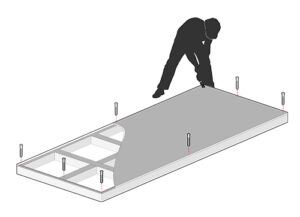
The Tube House’s façade is our intake of minimalistic and simple architecture. The purpose of the building is for temporary use – therefore, the units are designed in a straightforward manner that it is actually possible for it to be constructed by the residents themselves. It is as simple as repeating a build of a unit 4 times to create a module, and then an infinite amount if needed. The elevation of the house is done through a base which starts with a wooden frame on leveled ground, covered with a layer of plywood panel and 200 mm light Date Palm Particle Tubes (DPPT) made out of the trunk and rachis of the Date-Palm tree (commonly found in the UAE). A red colour C-channel frame was then added to cap the pipes.
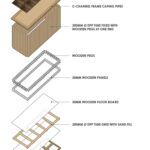
All the modules include a brown plywood material window frame, with an opening used for ventilation and daylight. The mechanics of opening and closing this window are effortless; a wooden piece with an attached hinge. Under the windows, red DPPTs were added to allow colour contrast, while still matching the C-channel frame’s colour, coupled with an old wooden door. Windows and doors are placed in such a way that it allows unit privacy and differentiating views.
Fact File
Project Name: The Tube House
Location: Dubai Desert Conservation Reserve
Architects: Ahmed M. Aglan & Haridas Narvekar
Materials used for façade: Date Pam Particle Tubes (DPPT) & Plywood
Co-Author: Haridas Narvekar, Design Architect, Dorsch Holding GmbH – Abu Dhabi

Haridas Narvekar is an Architect, Designer with global experience in India and the Middle East. Having Passed from Manipal University in 2015 with a Bachelor of Architecture he has a very multi-disciplinary approach to design. Through his professional journey, he has been working for more than 5 years with Middle East’s leading engineering consultancy and his portfolio includes a wide range of projects of hospitality, residential & commercial developments in the region. He is cowinner of the international House Competition 2019 – Desert House.
